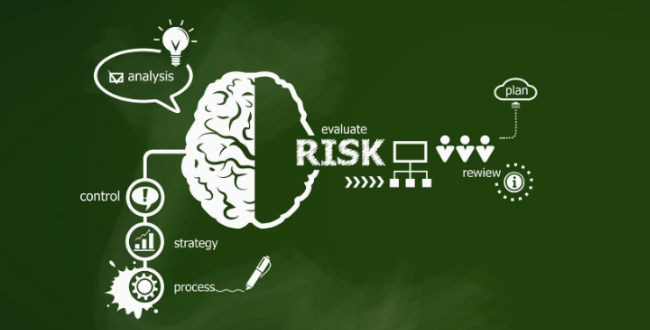More Shocking Revelations From Dr. Gui on GPM Simulations: Build a better model, get a better simulation.
Some might say, if it’s not broken, don’t fix it, those are the same folks who fail to innovate, time and time again. In the case of CPM’s current model, it’s surely broken. Every time a CPM monte carlo is executed the process is as follows:
The user selects a duration from the range for each activity then the model runs the forward and backward pass. This yields a single iteration. It is run as many times as required in order to achieve convergence. Read More
Another Amazing Discovery by Dr. Gui on Risk Analysis Current Practice
Safe Float – what is it and how does it impact the risk analysis process?
Let’s just delve right in to this. In the model below we can see that there are three activities with finish to start relationships. The duration for each activity is 30 days. There is a 10 day gap between each activity (this is a feature of GPM based on planned dates) The float value is displayed beneath each activity with 54 for Activity (A). Read More
Irrational Optimism in Risk Analysis
“Optimism is the madness of insisting that all is well when we are miserable.” – Voltaire
In case you happened across this post before reading the first post in this series, check that one out. This post will be here when you are done.
Now, as Kahneman taught us decades ago, there is bias in the qualitative portion of risk assessments. However, Dr. Gui Ponce de Leon and Dr. Vivek Puri have recently discovered that there is a substantial optimistic bias baked into the supposedly “scientific” portion of a risk analysis.
Up to now, all schedule risk analyses have been performed based on a Critical Path Method (CPM) Schedule. A CPM is calculated in such a way that each and every activity in the model will start on the earliest possible date; that’s just the way CPM works. However, that is not how projects work! I’ve polled hundreds of planners and project managers and have yet to find a single instance where a project completed and each activity started on the earliest possible date. In a real world project, as one part of the project gets behind schedule, other parts of the project float or pace to adjust. A CPM schedule risk analysis is not capable of modeling this real world behavior.
Hey, Schedule Risk Analysis – Your Math is Wrong
“Pure mathematics is, in its way, the poetry of logical ideas.” – Albert Einstein
Many believe that Einstein struggled with math, but that is a myth. In fact, he excelled in mathematics from a very young age. I imagine Einstein working on countless equations in a large room filled with chalkboards, hands covered in chalk as his greatest mathematical contributions poured from his mind, only for many benefactors to forsake them!
Despite the fact that math is generally a logical science, the art of estimation has never been further from accuracy than it is in the arena of planning and scheduling. There is a reason for this.
Read More
Was Carl von Clausewitz the First Risk Practitioner?

Most likely, we would not think about Carl von Clausewitz the way we would think about a modern risk practitioner. But he certainly had a risk practitioner’s mindset.
The Risk of Not Risking, and The Risk of Risking Blind

Think it’s a complete waste of resources, time and energy to perform a Monte Carlo Risk Analysis on your project? You might be right…
The Truth about CPM Risk Models

Let’s work through this together paragraph by paragraph and see if we agree. If you are involved in project management then you are familiar with critical path schedules. If you are not involved in project management and you are reading this then, hi Mom.
Truth Tables and the Construction of Quantitative Risk Models

I gained a great deal of knowledge during my college years, which is as it should be. In a Philosophy Logic class, I learned about truth tables and fell in love with them. Ludwig Wittgenstein is often credited with their invention. Ludwig himself was an interesting character. I read a great biography of the man years back, called Wittgenstein’s Poker. He is not a person one would want to share a dorm room with. But I digress…
The Role of Probabilistic Modeling in Schedule Risk Analysis

One of the more fascinating elements of history is the way in which individual humans can influence its course and change the future. For instance, where would the world be today if Winston Churchill had not stood so indomitably – and virtually alone against Hitler and Nazism? One person can impact the whole of humanity from one point in time forward. Another such contributor to the progress of humanity was Thomas Bayes. Bayes, the father of Bayesian analysis., lived in England in the 1700’s. It was his forward thinking that brought us probabilistic stochastic modeling.
Quality is the biggest risk in Construction Project Management

What if you have carefully planned a project, and skillfully designed its construction, but your contractor does not have the capability to perform the work in a quality manner? That is a risk to your project. The PMI diagram only used to refer to the elements of time, cost and scope. However, as of late, quality has also been included in the triangle.
In an IT project, poor quality usually manifests itself in the software crashing or producing unreliable output. In construction, the project creates a physical object – a building, a bridge, or a subway tunnel – so the risk posed by low quality is much greater than in projects that create intangibles, such as business process transformation or software. When construction fails, people may die. On the news, we hear about developing countries where buildings collapse and hundreds or thousands die, but construction quality problems resulting in loss of life are not limited to the developing world. I’ve been involved in the aftermath of two fatal construction quality problems during my career, and both were well-funded, professional construction projects in the United States. While no devastating consequences come close to death and injury in terms of quality problems, there is at least one other that has devastating impacts on both cost and schedule: re-work. Read More




